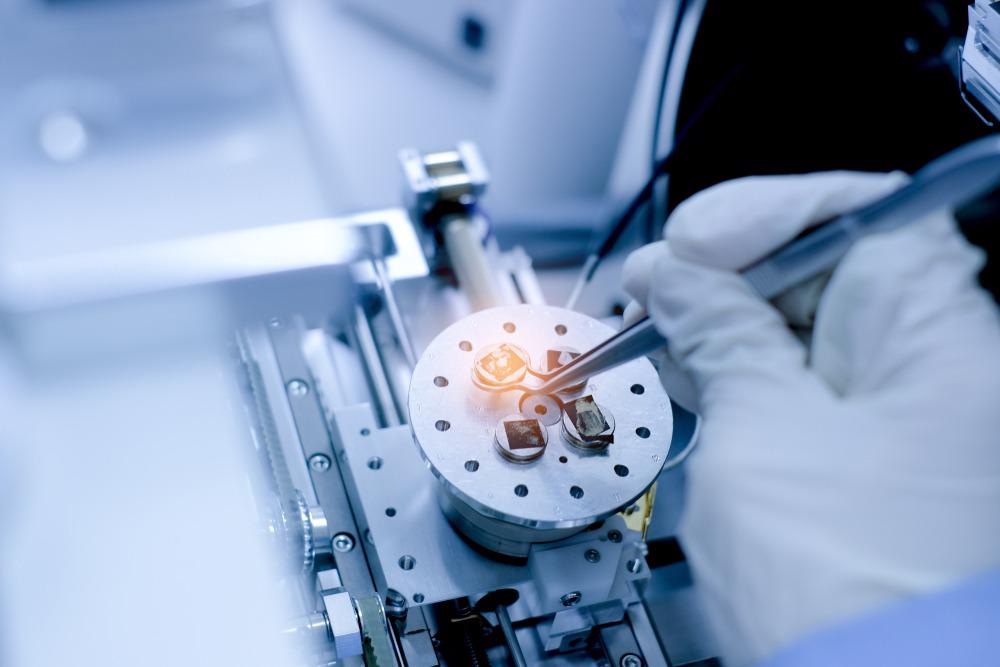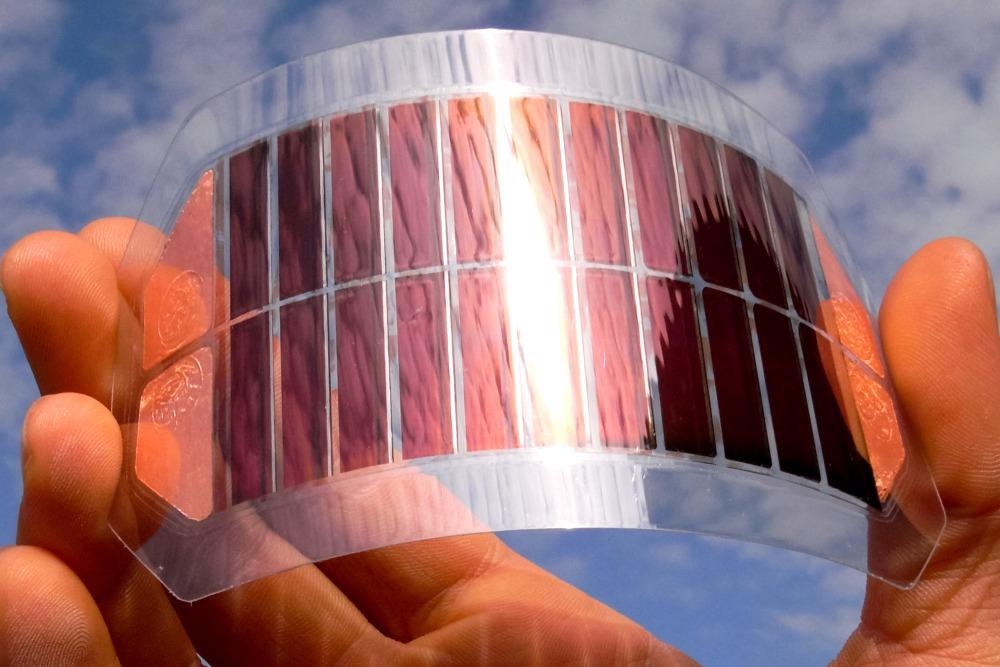The development of advanced electrode materials is of critical importance for many energy conversion and storage applications, and for the performance of various electronic components and smart devices.

Image Credit: Anucha Cheechang/Shutterstock.com
The efforts of many research groups in the industry and academia are concentrated on creating novel cost-efficient methods for fabricating such electrodes.
With the help of nanomaterials, researchers hope to enhance the physical, chemical, and electrical properties of the electrodes used in solar and fuel cells, metal-ion batteries, and others, enabling the production and storage of energy at a lower cost while extending the lifetime of these devices.
With the rapidly growing adoption of smart electronics, wearables, and advanced energy storage solutions, the demand for high-performance electrochemical sensing and energy storage/conversion devices, such as flexible touch screens, batteries, supercapacitors, and fuel cells, has increased enormously.
Finding Ways to Improve Electrode Performance
In recent years, the biggest challenge for such electrochemical applications has been the development of novel electrode materials, electrolytes, and membranes or modifying already existing electrochemical systems.
The ultimate goal of the research efforts is to improve the overall performance of the devices, their cost efficiency, and reduce their energy consumption.
Finding new ways to modify the surface of electrodes is one of the most active areas of research in electrochemistry in the last two decades. In traditional electrode designs, the performance of an electrode is determined by the solution it was placed into, the electrode’s materials, and the potential applied to its surface.
With the advancement of material science and nanotechnology, tailoring the structure of the electrodes has provided a powerful route to tuning their performance and controlling how the electrode interacts with its environment.
Tailoring Electrodes at the Nanoscale
Scientists are currently exploring a wide range of strategies for modifying electrodes, including nanomaterials, nanostructuring, organic monolayer modification of electrode surfaces, or hybrid surface modifications involving organic monolayers and nanomaterials.
In this context, the use of nanomaterials for electrode manufacturing can be regarded as means of controlling the electrode architecture at the nanoscale.
Such structural control combined with the unique properties of the nanomaterials, such as high mechanical strength, good flexibility, high surface area to volume ratio, and excellent electrical conductivity, enabled researchers to fabricate electrodes with unique characteristics, ranging from flexible and transparent electrodes to structures with ultrahigh surface areas and electrodes with switchable properties.
Carbon-Based Nanomaterials for High-Performance Energy Storage
Due to their large surface area, high porosity, and excellent electrical properties, carbon nanomaterials, such as graphene and carbon nanotubes, promise to replace traditional carbon-based electrode materials in high-performance supercapacitors, fuel cells, and battery packs.
Recently, researchers from the Warwick Manufacturing Group at the University of Warwick, together with colleagues from the Imperial College London, have created a hybrid flow battery that uses nitrogen-doped graphene sheets as electrodes.
The newly-developed flow battery is suitable for large-scale electrochemical energy storage applications without compromising energy efficiency, power density, and safety.
The research team compared the cost and performance of the graphene-based hybrid flow batteries to other battery technologies, such as lithium-ion batteries, showing that the total manufacturing cost of the new graphene-based batteries would be approximately 30 times lower compared to lithium-ion batteries.
Scaling up this new technology would allow storage of electricity from renewable sources from several days up to entire seasons, costing only about USD20 to USD27 per kWh (compared to over USD180 per kWh for lithium-ion batteries).

Image Credit: LuYago/Shutterstock.com
Next Generation of Transparent Electrodes for Displays and Solar Cells
Similarly, due to their outstanding optical transmittance and conductivity, carbon-based nanomaterials are considered a promising replacement for traditional materials, such as indium tin oxide, employed in manufacturing transparent conductive electrodes.
Such electrodes are widely used in solar cells, touch screen displays, biosensors, and wearable technology.
In these applications, hybrid nanomaterials where the carbon nanomaterials are combined with functional polymer layers or nanoparticles are of particular interest.
Several research groups have investigated a crack-free graphene transfer method where a polymer carrier layer supports the graphene material, enabling the fabrication of large-area graphene electrodes with a sheet resistance of 219 Ohm/square at 96.5% optical transmittance.
Nanostructured Electrodes Boost Performance of Lithium-Ion Batteries
Lithium-ion batteries take a dominant position among various energy storage technologies because of their very high cell potential, the ability to deliver outstanding energy density, and the highest rate capability compared to other battery chemistries.
Nevertheless, these batteries still suffer from poor ion diffusion kinetics and electron transfer at the anode and cathode. Besides, the cost is still a major obstacle hindering the adoption of the technology into renewable energy applications.
Ongoing research in numerous institutions worldwide has already demonstrated the potential of nanostructured mixed metal oxide electrodes for improving the performance of lithium-ion batteries.
Nanostructured electrodes with high surface area reduce the diffusion length of lithium ions and electron transport pathways, enabling the use of more cost-efficient electrode materials, such as materials with lower electronic conductivity and lower lithium-ion diffusion coefficients.
Another advantage arising from the large electrode/electrolyte contact areas is sustaining much higher charge/discharge rates. More importantly, nanostructured anodes and cathodes can easily accommodate volume changes during the charging/ discharging processes, thus enhancing the battery's lifetime and safety.
In summary, the use of functional nanomaterials can reduce electrode manufacturing complexity. At the same time, it can overcome the problems related to changes in the material structure during electrochemical processes, improving the electrochemical efficiency of the devices, and enabling their use in more demanding energy applications.
Continue reading: Improving Fuel Cell Performance with Nanoporous Carbon Membranes
References and Further Reading
Hasan, M.M., Hossain, M.M. (2021) Nanomaterials-patterned flexible electrodes for wearable health monitoring: a review. J Mater Sci 56, 14900–14942. Available at: https://doi.org/10.1007/s10853-021-06248-8
Mohanraj, J., et al. (2021) Nanostructured Hybrid Metal Mesh as Transparent Conducting Electrodes: Selection Criteria Verification in Perovskite Solar Cells. Nanomaterials, 11, 1783. Available at: https://doi.org/10.3390/nano11071783
Wang, Z., et al. (2021) Layer-by-Layer Self-Assembled Nanostructured Electrodes for Lithium-Ion Batteries. Small, 17, 2006434. Available at: https://doi.org/10.1002/smll.202006434
B. Mark (2021) Nanomaterials Improve Hybrid Flow Battery Electrodes, Advancing Renewable Energy Storage [Online] The Science Times. Available at: https://www.sciencetimes.com/articles/29281/20210124/nanomaterials-improve-hybrid-flow-battery-electrodes-advancing-renewable-energy-storage.htm
Disclaimer: The views expressed here are those of the author expressed in their private capacity and do not necessarily represent the views of AZoM.com Limited T/A AZoNetwork the owner and operator of this website. This disclaimer forms part of the Terms and conditions of use of this website.